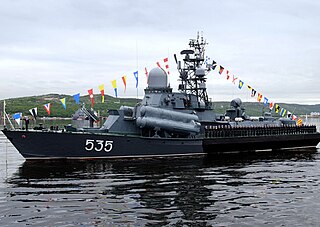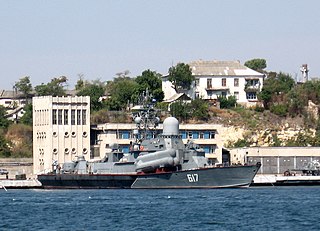Specifications
Small missile ships of the Project 1234 according to NATO classification Nanuchka-class corvette is a series of Soviet small missile ships (MRK) of the 3rd rank built at shipyards of the USSR from 1967-1992. [1]
The type consists of three series of subprojects:
- Project 1234, NATO code Nanuchka I
- Project 1234E, NATO code Nanuchka II
- Project 1234.1, NATO code Nanuchka III
- Project 1234.7, NATO code Nanuchka IV
By the name of the project code, the ships received the nickname gadflies in the navy. IRAs of Project 1234 were supplied to the Navy of four countries of the world: the USSR, Algeria, Libya and India. Libyan ones were destroyed during the NATO military operation in the summer of 2011; Indian ships of this project were withdrawn from the Indian Navy in 1999-2004.
The ships of the project were actively operated in all four fleets of the Soviet Navy and during the 1970-1980s carried out combat services in the World Ocean. They left a noticeable mark on the history of Soviet shipbuilding and are currently being gradually withdrawn from the combat strength of the Russian fleet. [1] So, if at the beginning of 2001 in the Russian Navy there were 2 ships of project 1234 and 18 ships of Project 1234.1, [2] then by 2006 all ships of project 1234 were withdrawn from the Navy and only 12 ships of the project remained in Project 1234.1 and 1 ship of Project 1234.7. [3] [4]
Construction and career
Geyzer was laid down on 21 December 1987 at Almaz Shipyard, Leningrad. Launched on 28 August 1989 and commissioned into the Baltic Fleet on 27 December 1989. [5]
On 12 August 2016, together with the Zarechny and Morshansk missile boats, he took part in exercises with artillery firing (from 76- and 30-mm artillery mounts) at targets simulating combat ships and air attack weapons of a conventional enemy, and also performed electronic missile launches at targets imitating a detachment of imaginary enemy ships. [6]
In September 2016, as part of a checkout to the sea, the crew of the Geyser successfully fired a Malachite cruise missile at a naval shield imitating a simulated enemy ship. According to objective control data, the launched cruise missile successfully hit the designated target at a distance of over 50 kilometers. Then he launched a target missile for the testing of the Admiral Makarov. [7] [8]
Pennant numbers
| Date | Pennant number [5] |
|---|
| 1990 | 555 |
The P-700 Granit is a Soviet and Russian naval anti-ship cruise missile. Its GRAU designation is 3M45, its NATO reporting name SS-N-19 Shipwreck. It comes in surface-to-surface and submarine-launched variants, and can also be used against ground targets.
The RPG-27 is a Soviet single shot disposable rocket-propelled grenade (RPG) shoulder-fired missile and rocket launcher. It entered service with the Soviet Army in 1989.

The Baltic Fleet is the fleet of the Russian Navy in the Baltic Sea.

The Nanuchka class, Soviet designation Project 1234 Ovod, are series of corvettes built for the Soviet Navy and export customers between 1969 and 1991.

The Ivan Rogov class, Soviet designation Project 1174 Nosorog (Rhino), is a class of landing ships built in the Soviet Union. The ships were built as a part of expansion of the Soviet Navy's amphibious warfare capabilities in the 1970s.

K-560 Severodvinsk is a Yasen class nuclear-powered cruise missile submarine of the Russian Navy, and the lead vessel of the class. The submarine is named after the city of Severodvinsk. She is deployed with the Russian Northern Fleet.

The Uzbek Navy, known officially as the River Force of Uzbek Frontier Committee are the naval arm of the Armed Forces of the Republic of Uzbekistan, serving under the Border Troops of the State Security Service.

Perekop is the second ship of the Smolnyy-class training ship of the Russian Navy.

Admiral Yumashev was a Kresta II-class cruiser of the Soviet Navy.
The K-132 Irkutsk is an Oscar-class submarine in the Russian Navy.

The Aysberg was a Nanuchka-class corvette in the Soviet Navy and later the Russian Navy.

The Iney is a Nanuchka-class corvette in the Soviet Navy and later the Russian Navy.

The Livien' is a Nanuchka-class corvette in the Russian Navy.

The Mirazh was a Nanuchka-class corvette in the Soviet Navy and later the Russian Navy.

The Moroz was a Nanuchka-class corvette in the Soviet Navy and later the Russian Navy.

The Passat is a Nanuchka-class corvette in the Soviet Navy and later the Russian Navy.

The Rassvyet is a Nanuchka-class corvette in the Soviet Navy and later the Russian Navy.

The Razliv is a Nanuchka-class corvette in the Russian Navy.

The Zyb' is a Nanuchka-class corvette in the Russian Navy.

The Shtil' was a Nanuchka-class corvette in the Soviet Navy and later the Russian Navy.
This page is based on this
Wikipedia article Text is available under the
CC BY-SA 4.0 license; additional terms may apply.
Images, videos and audio are available under their respective licenses.

















